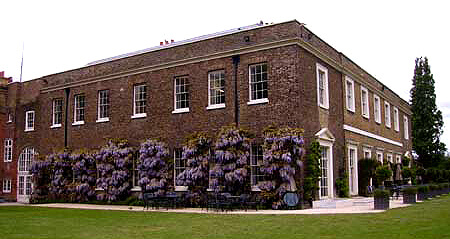Fulham Palace
Address: Bishop’s Avenue, London.
Opening hours: You can visit the palace and its grounds for free every day, during daylight hours.
Contact: Telephone 020 7736 3233.

In Fulham, London, you will find the former residence of the Bishops of London. This is the Fulham Palace, which houses a museum and a large botanical garden. The Fulham Palace served as home to the Bishops of London for a long period of time. In fact, it served as such from the 11th century up to 1975. At the moment, the Church of England still owns the property. It is being managed by the Fulham Palace Trust and the London Borough of Hammersmith and Fulham. You can find it next to Bishop’s Park.
Though Fulham Palace has been home to the bishops since the Medieval times, 21st century excavations and restorations of the grounds show that there are remains on the site that come from Neolithic and Roman settlements. This means that the land has been inhabited since around 700 AD. At that time, the Bishop of London, Waldhere, became the area’s owner.
There had always been a lot to see at Fulham Palace. Besides it having served as the residence of the Bishops of London, it also offers robust and scenic gardens. In the 17th century, there were new plant species introduced to the palace’s gardens. In 1675, Henry Compton was the bishop. He was the one who brought new flora to the palace and even grew the country’s first coffee tree.

The palace grounds were not all about flowers and beauty. They even served as allotments during the Second World War. It was where food was grown to help people, who were part in the war effort, subsist. During the war, some parts of Fulham Palace were bombed. Then, after the war, it had become difficult for the Church to maintain the large, historic building.

Out of the original 30 acres of Palace grounds, only 12 acres remain. Still, Fulham Palace has England’s longest moat, which provides it with some kind of importance. Local people are even using the former allotments as spaces to grow flowers, as well as fruits and vegetables. The gardens still has a certain charm, boasting of ancient trees, wisteria and more. It is also in Fulham Palace that you can find the Fulham Museum. The museum makes use of the Porteus Library and part of Bishop Howley’s Dining Room. It houses the palace’s paintings, carved masonry works, stained glass, bishop’s cope and other evidences of the palace’s history. In 1855, a lost manuscript called Of Plymouth Plantation was found int eh library. This was a United States founding document of William Bradford’s.
You can visit the palace and its grounds for free every day, during daylight hours.